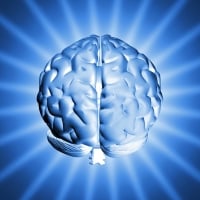NSF Awards $25 Million for Center for Brains, Minds, and Machines

Smart technology could be so much more intelligent than Watson and Siri, the Internet of Things, and self-driving cars. But leveraging the enormous potential of artificial intelligence and creating world-changing machines and software require answering one of the big questions of the universe: How does the human brain actually work?
To find out, the National Science Foundation (NSF) recently awarded a $25 million grant over five years to the Massachusetts Institute of Technology (MIT) to establish the Center for Brains, Minds and Machines (CBMM). Headquartered at MIT, the new research center will explore how human intelligence emerges from brain activity and employ an interdisciplinary approach with Harvard University, Cornell University, and other academic institutions, along with industry partners such as Google, Microsoft, IBM, and others.
Why is this important? "Understanding the brain is one of the grand scientific challenges at the intersection of the physical, life, behavioral and engineering sciences," said John Wingfield, assistant director of NSF's Biological Sciences Directorate, in a statement. "Despite major research and technological advances achieved in recent decades, a comprehensive understanding of the brain--how thoughts, memories and intelligent behavior emerge from dynamic brain activity--remains unexplained."
There will be four primary research areas at CBMM:
- Integration of intelligence, including vision, language, and motor skills
- Circuits for intelligence, which will span research in neurobiology and electrical engineering
- Development of intelligence in children
- Social intelligence
Also on the agenda are summer school, technical workshops, and online courses that will train future scientists and engineers. The MIT center will also play a key role in the new BRAIN Initiative, an effort by federal agencies and private partners to support and coordinate research to understand how the brain works.
Experts believe the special-purpose technology in which computers learn to perform tasks from sets of training examples to interpret spoken language (Siri) or play Jeopardy (Watson) falls short of the true potential of artificial intelligence.
Tomaso Poggio, the Eugene McDermott Professor of Brain Sciences and Human Behavior at MIT, stated:
These recent achievements have, ironically, underscored the limitations of computer science and artificial intelligence. We do not yet understand how the brain gives rise to intelligence, nor do we know how to build machines that are as broadly intelligent as we are. It’s time to try again. We know much more than we did before about biological brains and how they produce intelligent behavior. We’re now at the point where we can start applying that understanding from neuroscience, cognitive science and computer science to the design of intelligent machines.

